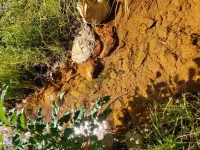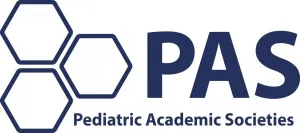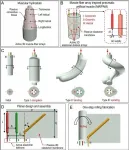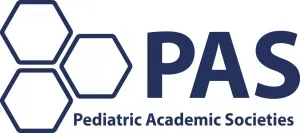Neighborhood disadvantage may be an environmental risk factor for brain development
USC study suggests improving social and educational resources could alleviate risk
2021-05-05
(Press-News.org) A new USC study suggests that certain neighborhoods - particularly those characterized by poverty and unemployment - may pose an environmental risk to the developing brains of children, impacting neurocognitive performance and even brain size.
The research was published May 3 in the journal JAMA Pediatrics.
These findings highlight the importance of neighborhood environments for child and adolescent brain development, the researchers said, and suggest that policies, programs and investments that help improve local neighborhood conditions and empower communities could support children's neurodevelopment and long-term health.
"This is the first large, national study of neurodevelopment to determine that the role of neighborhood disadvantage is similar across all regions of the country, and we found that what mattered most were the local differences in neighborhood disadvantage within each city, rather than how cities differ from each other overall," said lead author Daniel Hackman, assistant professor at the USC Suzanne Dworak-Peck School of Social Work.
Researchers from the USC Suzanne Dworak-Peck School of Social Work and the Keck School of Medicine of USC used data from the Adolescent Brain and Cognitive Development (ABCD) Study, collected from October 2016 - 2018. The ABCD Study is the largest long-term study of brain development and child health in the United States.
Neighborhood disadvantage, after accounting for family socioeconomic status and perceptions of neighborhood safety, showed associations with multiple aspects of neurocognition and smaller total cortical surface area, particularly in the frontal, parietal and temporal lobes.
"Our findings aren't specific to the child's home life, as we adjusted for socioeconomic factors at each child's home. But the research suggests neighborhoods may have different levels of social and educational resources and opportunities that can impact a child's neurodevelopment," said senior author Megan Herting, assistant professor at the department of preventive medicine at the Keck School of Medicine at USC.
In addition, the researchers said, disadvantaged neighborhoods may lack quality health services, access to nutritional foods, and well-maintained parks and rec facilities; they may also expose residents to more pollutants or social stressors.
"This research is important as it not only highlights that neighborhoods matter, but it also suggests that promoting neighborhood equity based on the unique local conditions within cities may improve short and long-term health and development of children and adolescents," said Hackman.
INFORMATION:
In addition to Herting and Hackman, other study authors include Dora Cserbik, Jiu-Chiuan Chen, and Rob McConnell of the department of preventive medicine at the Keck School; Bita Minaravesh of the USC Dornsife Spatial Sciences Institute; and Kiros Berhane of the Department of Biostatistics at Columbia University Mailman School of Public Health.
The study was supported with grants from the National Institute of Environmental Health Sciences (P30ES007048-23S1 and P01ES022845), the National Institutes of Health (R01ES031074 and R21HD099596) and the Rose Hills Foundation.
For a PDF of the study, contact Leigh Hopper at lhopper@usc.edu or (310) 308-0405
ELSE PRESS RELEASES FROM THIS DATE:
2021-05-05
Using a bit of machine learning magic, astrophysicists can now simulate vast, complex universes in a thousandth of the time it takes with conventional methods. The new approach will help usher in a new era in high-resolution cosmological simulations, its creators report in a study END ...
2021-05-05
Many miles of streams and rivers in the United States and elsewhere are polluted by toxic metals in acidic runoff draining from abandoned mining sites, and major investments have been made to clean up acid mine drainage at some sites. A new study based on long-term monitoring data from four sites in the western United States shows that cleanup efforts can allow affected streams to recover to near natural conditions within 10 to 15 years after the start of abatement work.
The four mining-impacted watersheds--located in mountain mining regions of California, Colorado, Idaho, and Montana--were all designated as Superfund sites under the Comprehensive Environmental Response, Compensation, and Liability Act (CERCLA), which helps ...
2021-05-05
A universe evolves over billions upon billions of years, but researchers have developed a way to create a complex simulated universe in less than a day. The technique, published in this week's Proceedings of the National Academy of Sciences, brings together machine learning, high-performance computing and astrophysics and will help to usher in a new era of high-resolution cosmology simulations.
Cosmological simulations are an essential part of teasing out the many mysteries of the universe, including those of dark matter and dark energy. But until now, researchers faced the common conundrum of not being ...
2021-05-05
As pandemic lockdowns went into effect in March 2020 and millions of Americans began working from home rather than commuting to offices, heavy traffic in America's most congested urban centers--like Boston--suddenly ceased to exist. Soon afterwards, the air was noticeably cleaner. But that wasn't the only effect. A team of Boston University biologists who study how human-related sounds impact natural environments seized the opportunity to learn how the reduced movement of people would impact local ecosystems. They found--surprisingly--that sound levels increased in some nature conservation areas, a result of cars driving faster on roads no longer choked by traffic.
BU ecologist Richard Primack and Carina Terry, an undergraduate student working in Primack's ...
2021-05-05
Spinning or rotating objects are commonplace, from toy tops, fidget spinners, and figure skaters to water circling a drain, tornadoes, and hurricanes.
In physics, there are two kinds of rotational motion: spin and orbital. Earth's motion in our solar system illustrates these; the daily 360-degree rotation of Earth around its own axis is spin rotation, while Earth's yearly trip around the sun is orbital rotation.
The quantity in physics defined to describe such motion is angular momentum (AM). AM is a conserved quantity: given an initial amount of it, it can be broken up and redistributed among particles such as atoms and photons, ...
2021-05-05
BOSTON -- Immunity often calls to mind the adaptive immune response, made up of antibodies and T cells that learn to fight specific pathogens after infection or vaccination. But the immune system also has an innate immune response, which uses a set number of techniques to provide a swift, non-specialized response against pathogens or support the adaptive immune response.
In the past few years, however, scientists have found that certain parts of the innate immune response can, in some instances, also be trained in response to infectious pathogens, such as HIV. Xu Yu, MD, a Core Member of the Ragon Institute of MGH, MIT and Harvard, and colleagues ...
2021-05-05
Adults are more compassionate and are up to twice as likely to donate to charity when children are present, according to a new study from psychologists.
The research, conducted by social psychologists at the University of Bath and Cardiff University and funded by the Economic and Social Research Council (ESRC), examined how the presence of children influences adults' compassionate motivations and behaviours.
Across eight experiments and more than 2,000 participants, the researchers asked adults to describe what typical children are like. After focusing on children in this way, participants ...
2021-05-04
A hot topic symposia session during the Pediatric Academic Societies (PAS) 2021 Virtual Meeting will discuss a multipronged approach to addressing childhood adversity and promoting resilience - at the clinical, systems, community and educational levels.
The effect of adverse childhood experiences (ACEs) on health outcomes across the lifespan is well recognized among pediatric practitioners. Increasing the ability of healthcare providers to recognize and respond to ACEs can buffer the long-term negative physical and mental health impacts of adversity and increase patient-centered care.
"In the era of COVID-19, ...
2021-05-04
Biological organisms (such as elephant trunks, octopus tentacles, and human tongues) show remarkable dexterity and self-adaptation in unstructured environments, relying on the multiple-mode actuations of the skeleton-free muscular hydrostats. In general, muscular hydrostats mainly consist of well-ranged active 3D muscle-fiber arrays bundled by passive connective tissues (Fig. 1A). By selectively actuating the active 3D muscle-fiber arrays, muscular hydrostats can generate elongation, bending, contraction and twisting. Producing such multiple-mode actuation of muscular hydrostats is an interesting but long-lasting challenge in the field of robotics.
During past decades, many artificial muscles (such ...
2021-05-04
A Pediatric Policy Council state of the art plenary session during the Pediatric Academic Societies (PAS) 2021 Virtual Meeting explored the role of public health research in iterative policymaking to reduce gun violence in America.
The toll of gun violence on young people represents one of the most significant public health challenges facing contemporary America. In recent years, firearm-related injury and death has made headlines routinely, including mass shootings at schools, public festivals, and places of worship, while daily occurrences of gun violence affect local communities.
Gun ...
LAST 30 PRESS RELEASES:
[Press-News.org] Neighborhood disadvantage may be an environmental risk factor for brain development
USC study suggests improving social and educational resources could alleviate risk







